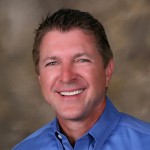
Dr. James D. Sterling
Dr. James D. Sterling has had many accomplishments in his 45-year career, but among the most formative is the training he’s been fortunate to receive from some of the world’s most respected therapists. The ability to learn from these experts has helped Dr. James D. Sterling develop his own, well-rounded take on couples and family therapy.
Among these experts was Olga Silverstein, says Dr. James D. Sterling. Olga Silverstein was a respected author and therapist who pioneered the theory that parents tend to push male children out of the home too soon. Her goal, Dr. James D. Sterling tells us, was to show parents that just because a young male doesn’t want to leave home immediately following graduation didn’t mean they’d failed as parents.
Dr. James D. Sterling regularly works with parents and families as part of his practice, the New York Center for Psychotherapy. Located on Park Avenue in New York, the practice of Dr. James D. Sterling focuses on individualized sessions that encourage open communication. Dr. Silverstone taught at the Ackerman Institute for the Family, a New York training institute that focuses on therapy for couples and families.
Silverstein’s most enduring book is The Courage to Raise Young Men, a book that tackled the parent-son relationship in a way no other book had at that time. Dr. James D. Sterling reports that Silverstein used her own familial experience, combined with her years of providing therapy, to describe the issues she’d seen in families with male children.
According to Dr. James D. Sterling, Silverstein also co-wrote The Therapeutic Voice of Olga Silverstein and The Invisible Web: Gender Patterns in Family Relationships. Following her death in 2009, Dr. James D. Sterling says the Ackerman Institute developed an award in her name. Each year, the Olga Silverstein Training Award will acknowledge one student who has successfully finished Ackerman’s clinical program and is heading into the first year of externship training, Dr. James D. Sterling explains.
Dr. James D. Sterling is an educator himself, serving as Assistant Clinical Professor in the Department of Psychiatry at Mt. Sinai Medical Center. Having worked in clinical instruction for the hospital’s department of psychiatry since 1982, Dr. James D. Sterling is always seeking to improve his knowledge of the field in order to pass that knowledge on to others. Dr. James D. Sterling holds a Doctorate from the University of Chicago.
A family man, Dr. James D. Sterling lives in New York with his wife and daughter. Dr. James D. Sterling has served on the board of directors of the Alcoholism Council of Greater New York and held memberships with the American Psychological Association and the American Group Psychotherapy Association.





